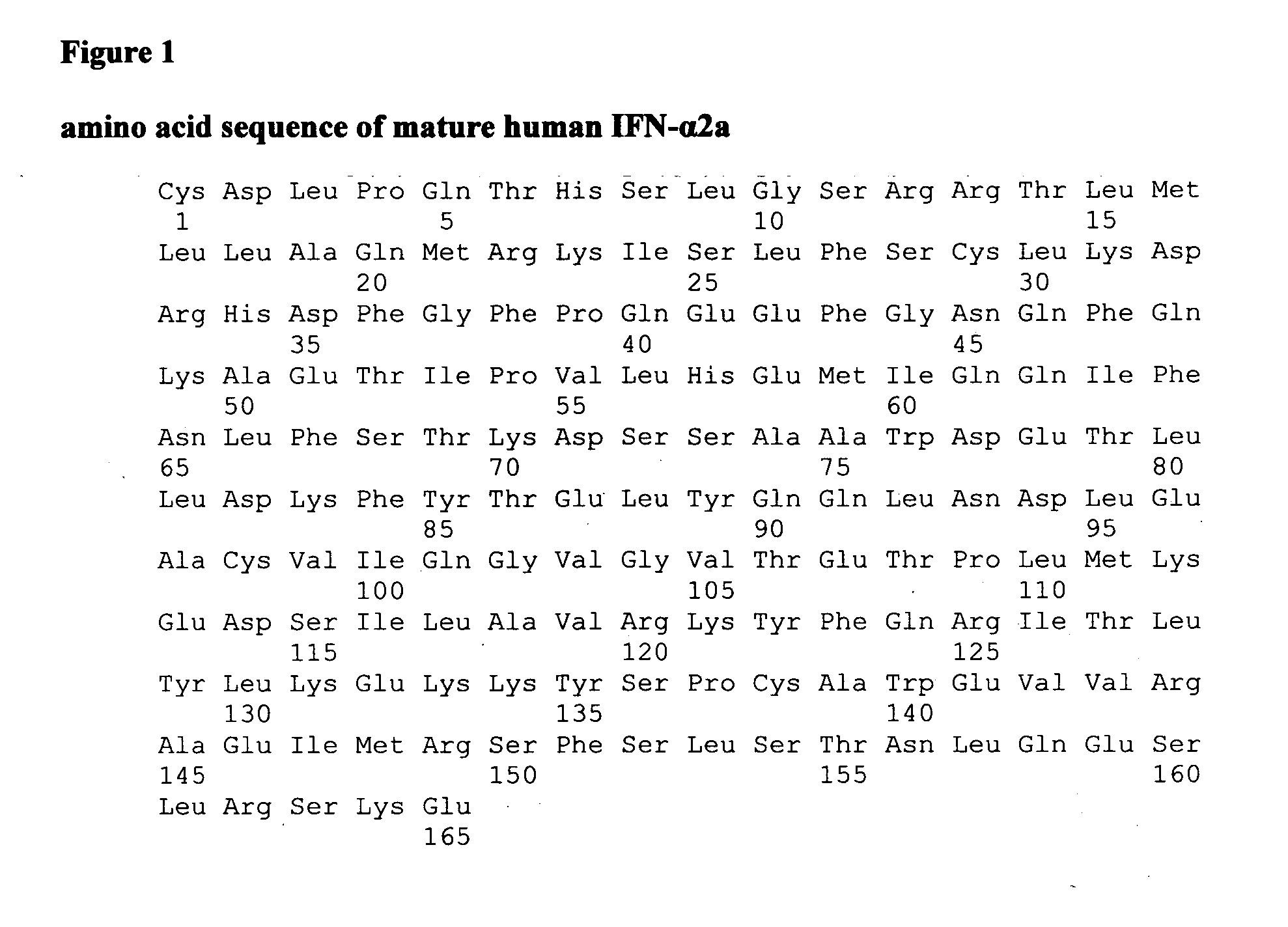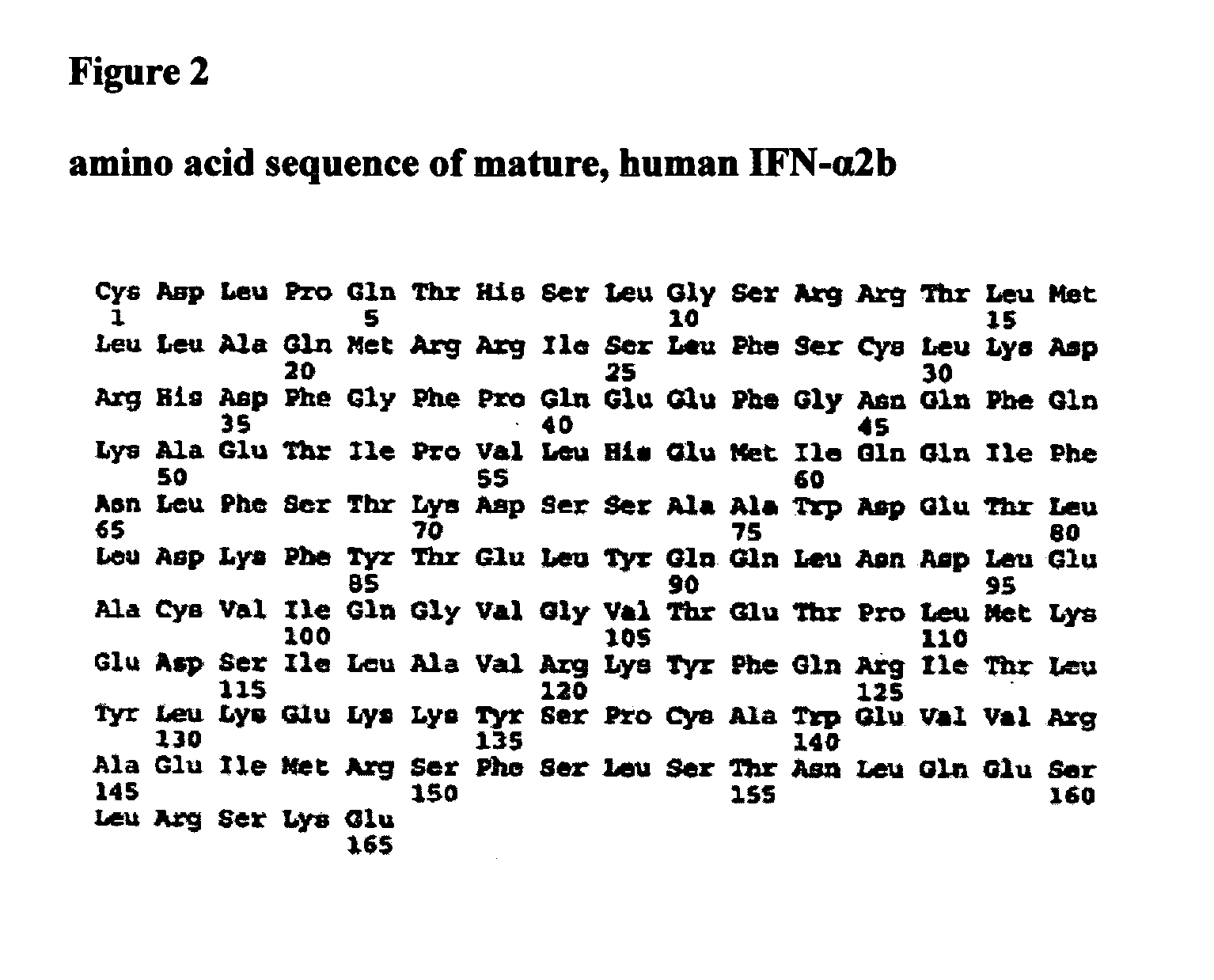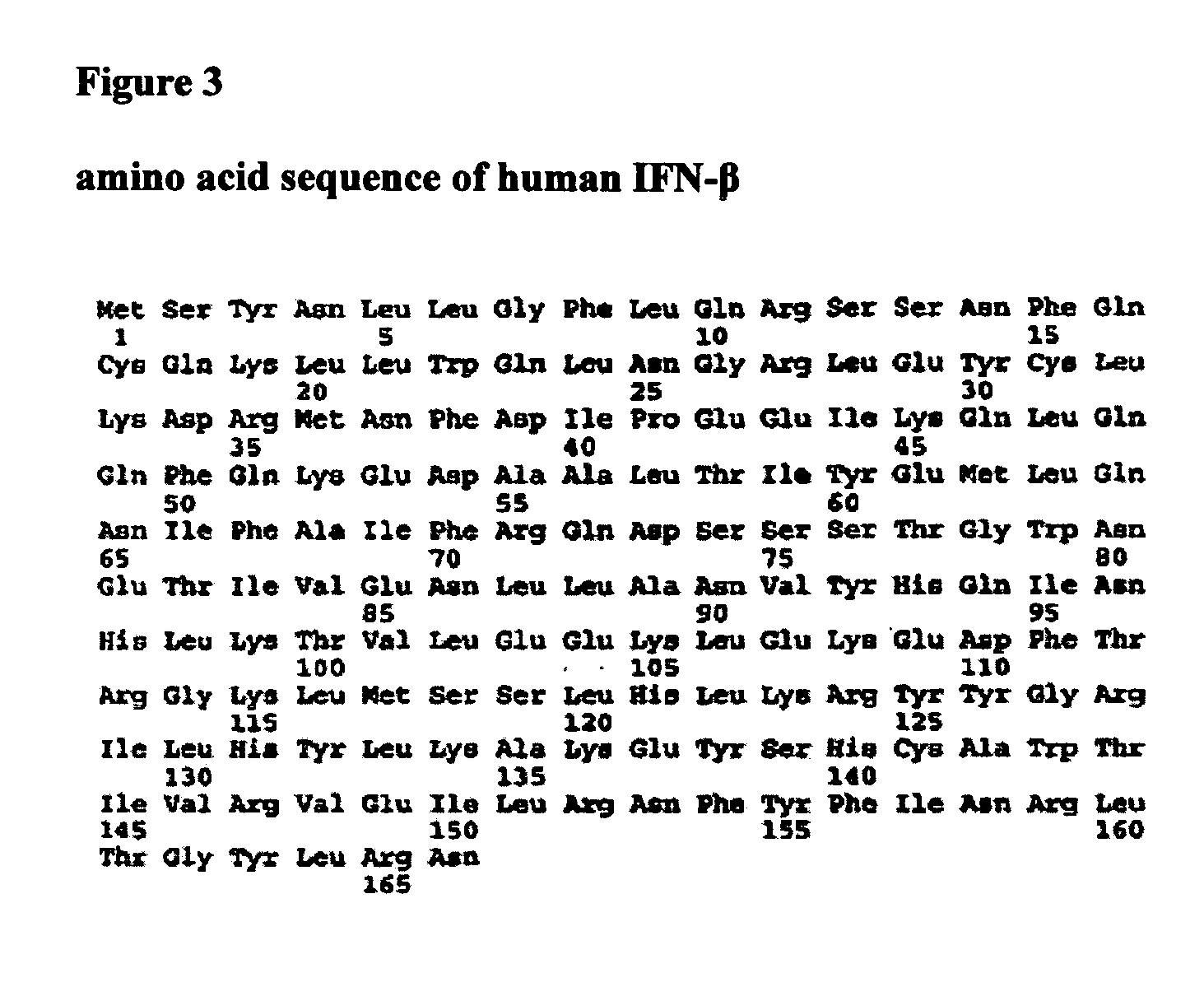Synthetic hyperglycosylated, and hyperglycosylated protease-resistant polypeptide variants, oral formulations and methods of using the same
a protease-resistant, glycosylated technology, applied in the direction of peptide/protein ingredients, drug compositions, immunological disorders, etc., can solve the problems of short serum half life of therapeutic proteins, inflammatory response, and preclude the use of certain administration routes, so as to increase protease resistance
- Summary
- Abstract
- Description
- Claims
- Application Information
AI Technical Summary
Benefits of technology
Problems solved by technology
Method used
Image
Examples
example 1
Construction of hybrid Type I Interferon Receptor Polypeptide Agonists with Non-Native Glycosylation Sites
[1157] Among Type I interferons, two interferon alpha subtypes (IFN alpha 2b and 14), IFN beta 1 and IFN Omega 1 are naturally glycosylated in mammalian cells (FIG. 24). FIG. 24 provides an amino acid sequence comparison of the amino acid sequences of Infergen (SEQ ID NO:1356) and Type I Interferon species (SEQ ID NOs:1357-1360) that have been reported to be glycosylated naturally. The amino acid residues where the glycosylations occur are labeled with bold outlined boxes. The asparagines residues are the anchoring site for N-link glycosylation and the threonine residue is the anchoring site for O-link glycosylation. The majority sequence is shown above (SEQ ID NO:1355).
[1158] Based on the high degree of amino acid sequence identity between Infergen and other Type I interferons, glycosylation sites were designed in Infergen on the basis of amino acid sequence alignment of Infe...
example 2
Design, Construction, Expression and Glycosylation Sites Generation of Mammalian Infergen Fusion constructs with Other Type I Interferon Signal Peptides
Materials and Methods
[1165] Construction of Fusion Genes
[1166] The amino acid alignments of Infergen, and exemplary Infergen fusion proteins, human Interferon Alpha 14 and Beta are shown in FIG. 30. A two-step polymerase chain reaction strategy was designed to synthesize the fusion genes for the proposed fusion proteins. The primers used in the PCR reactions are listed in Table 12, below.
TABLE 12Primer NameSequence (5′ to 3′)IFNa14_InnerGCCCTGGTGGTGCTGAGCTGCAAGAGCAGC-TGCAGCCTGGGCTGCGACCTGCCCCAGACCCACAGC(SEQ ID NO:1350)IFNa14_OuterTATAAAGCTTGCCACCATGGCCCTGCCCTTC-GCCCTGATGATGGCCCTGGTGGTGCTGAGCTGCAAG(SEQ ID NO:1351)IFNb_InnerGCCCTGCTGCTGTGCTTCAGCACCACCGCCC-TGAGCATGAGCTGCGACCTGCCCCAGACCCACAGC(SEQ ID NO:1352)IFNb_OuterTATAAAGCTTGCCACCATGACCAACAAGTGC-CTGCTGCAGATCGCCCTGCTGCTGTGCTTCAGCACC(SEQ ID NO: 1353)INFERGEN_EndTATAGAATTCTCATTACTC...
PUM
| Property | Measurement | Unit |
|---|---|---|
| Cell angle | aaaaa | aaaaa |
| Pharmaceutically acceptable | aaaaa | aaaaa |
Abstract
Description
Claims
Application Information
 Login to View More
Login to View More - R&D
- Intellectual Property
- Life Sciences
- Materials
- Tech Scout
- Unparalleled Data Quality
- Higher Quality Content
- 60% Fewer Hallucinations
Browse by: Latest US Patents, China's latest patents, Technical Efficacy Thesaurus, Application Domain, Technology Topic, Popular Technical Reports.
© 2025 PatSnap. All rights reserved.Legal|Privacy policy|Modern Slavery Act Transparency Statement|Sitemap|About US| Contact US: help@patsnap.com



